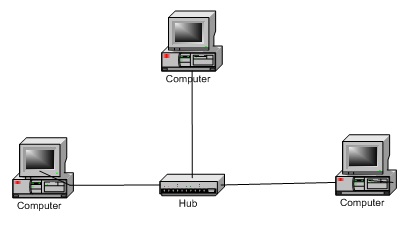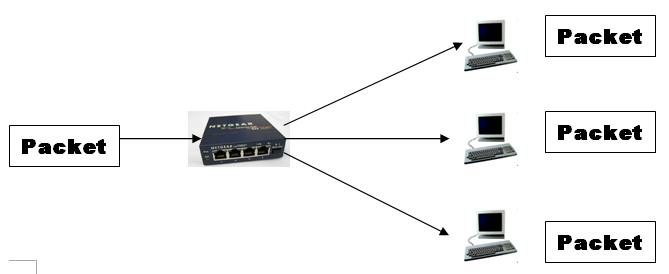| Hub | |
A hub allows more than one computer to be interconnected. NIC’s can be connected together by a single length of cable but this is not a good way to connect machines as if the cable breaks then all the PC’s will loose connectivity. When using a hub, each computer will use a cable each to connect to the network. As such if a single cable breaks it will only affect a single computer. When a message is sent to a hub it will tell all other computers connected to it about that message. Hubs can have up to 48 PC’s connected to them. Also hubs can be linked together to allow even more PC’s to connect. Each PC is connected to the hub by a cable into a port on the hub. The more ports on the hub the more PC’s which can be connected.
Hubs are effectively a bus network with the bus being inside the actual hub itself. They act as broadcast devices so when a packet of data arrives on a single port it is then broadcast out to all other ports. The diagram below demonstrates this. The diagram shows that the packet is sent to all three PC's connected to the hub. For small networks this is ok. However the more PC's connected the more traffic will be generated. If there are 30 PC's then every packet would be sent to all 30 of them. If each PC is constantly sending packets on the network then it will not take long of the network to run out of band width. |
|

| Links |
| Network Hardware |
 Custom Search
Custom Search

